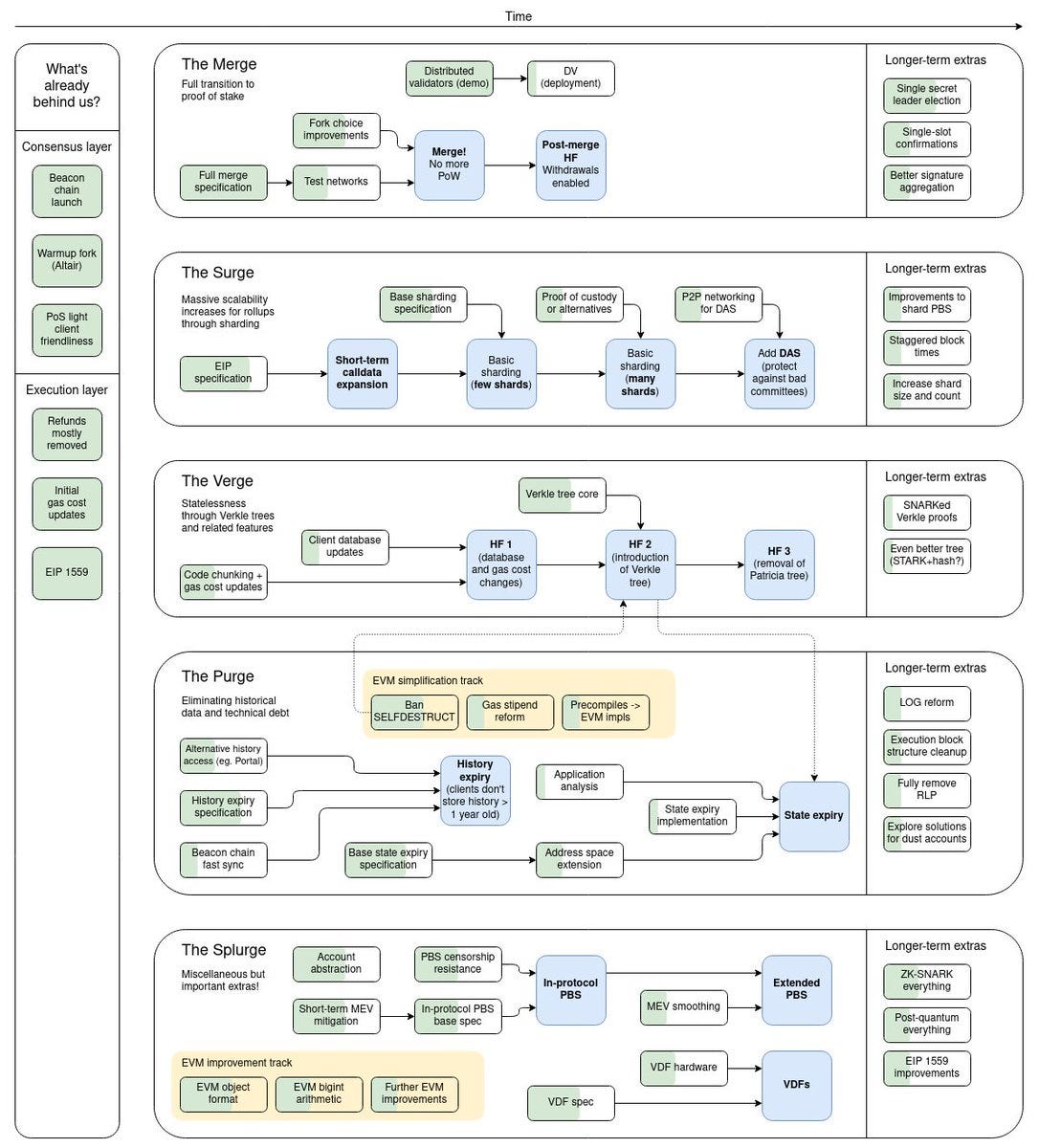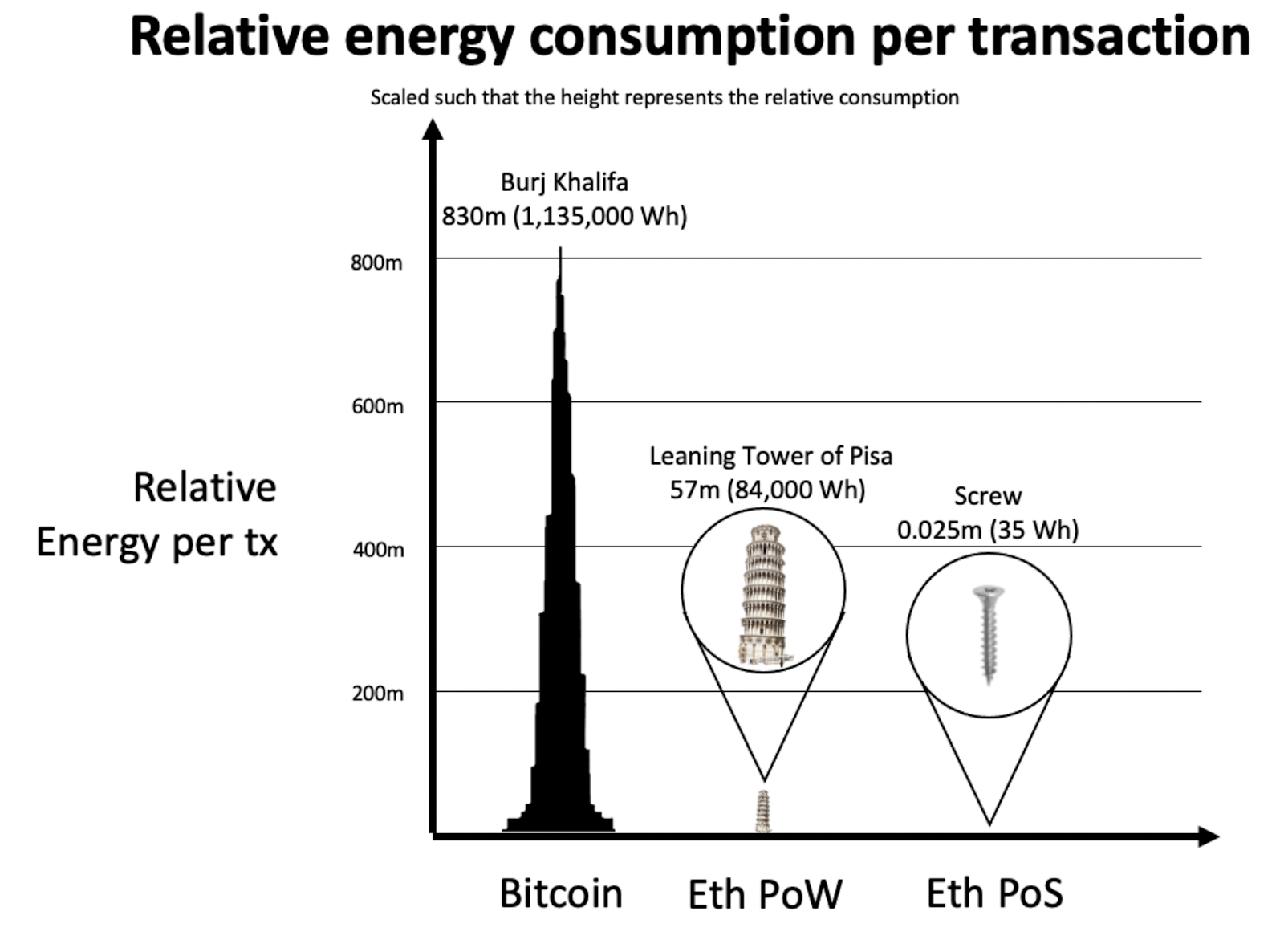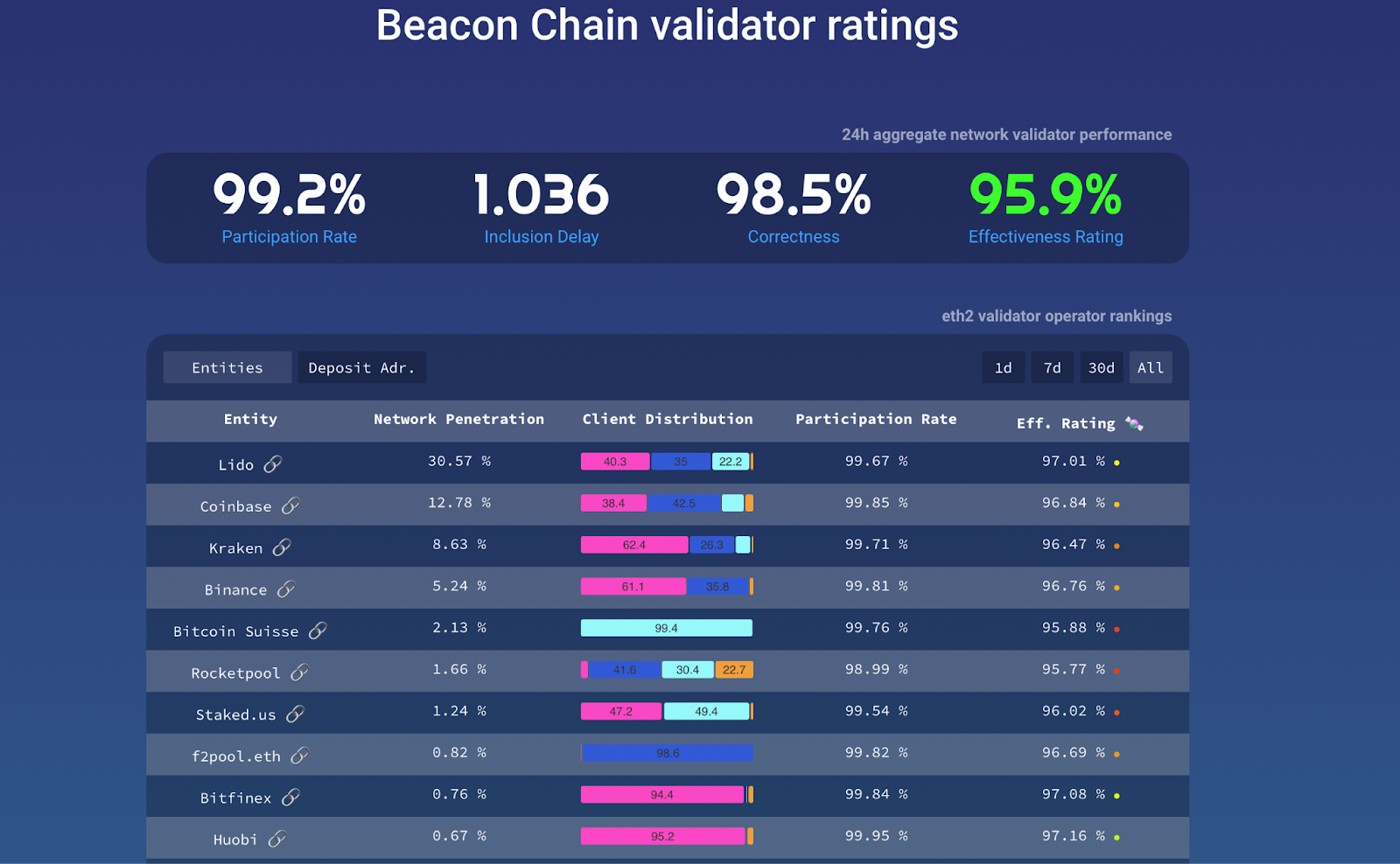SSV’s Part in the Merge
Now that the Merge has finalized and validators are securing the network, SSV's decentralised validator infrastructure has a part to play.

Since its launch in 2015, the Ethereum network has ensured its security by validating transactions and adding new blocks to the blockchain through the process of mining, technically known as Proof of Work (PoW) consensus. The process involves miners (computers running specialized node software) that compete to solve an intricate mathematical problem to verify and add new blocks to the chain, and claim the rewards for doing so.
The most infamous issue with PoW consensus is that the hardware consumes considerable energy to solve these problems. In the case of Bitcoin, this process consumes as much power as some small nation-states. Making it one reason the Ethereum Foundation wanted to change to a more sustainable, scalable, and secure solution early in its roadmap. The Merge is the first step in a line of upgrades planned for the network, with Sharding estimated to go live in 2023.

On 1 December 2020, Ethereum core developers started testing the Beacon Chain. A separate chain, running parallel with the ETH Mainnet using the Proof of Stake (PoS) consensus mechanism, which would eventually “merge” with the PoW chain. Industry leaders equated merging the chains to changing the engine on a flying plane — only this plane has a few hundred billion dollars of value flowing inside it. This technological feat — five years in the making — went down without a sweat, thanks to the devs and community that played a catalyzing role.
What the Merge means for miners is that PoW will no longer be how valid blocks are produced. Instead, PoS validators assume this role and will be responsible for processing the validity of all transactions and block proposals.
By changing to PoS, Ethereum will reduce its carbon footprint by ±99.95% and set the foundations for Sharding, an improved token-economic model, transaction improvements, and more.

Nonetheless, power consumption and efficiency only scratch the surface of what the Merge brings when considering the very real challenges of access, centralization, and asset versatility.
Unlike miners that need uninterrupted high-end processing power and technical know-how to verify blocks. A potential validator requires a 32 ETH collateral lockup, validator keys, and 24/7 uptime. If the validator goes down and misses duties, it could get penalized (losing some of its ETH collateral) or slashed (removed) from the network.
A critical difference between how the two approaches evolve is that mining pools tend to consolidate as processing power pools to increase rewards, making it harder for smaller or solo miners to compete. Whereas solo-staking, staking pools, and staking services allow all their users to receive a similar APR (annual percentage rate), regardless of the setup. Entitling anyone with some ETH to contribute to the network’s security and receive a share of rewards from their validator for doing so.
What the Merge has done is level the playing field for everyone that wants to participate. With staking services, anyone with an internet connection and a crypto-wallet can connect and start staking if they have the capital.

In the spirit of banking the unbanked and providing access, the capital barrier is also becoming a problem of the past. This is overcome by staking pools and liquid staking services that enable users to stake any amount. With liquid staking, users receive a liquid staking derivative (LSD) pegged to ETH so the asset can stay liquid while locked up for staking.
The beauty of this underlying infrastructure is that it presents a new asset class with many new opportunities for people to unlock their assets and expose them to DeFi. Currently, almost 14 million ETH has been staked by over 413,000 validators, and the numbers are steadily growing. Before the Surge initiates, a considerable focus will be placed on the network’s validators.

As we can see in the roadmap, Distributed Validators (DVs) are the next important step in the Ethereum journey, and it’s quite an important one. Logically it makes sense as well; now that validators are the network’s new backbone, it needs to be made as robust as possible.
There are many different ways to run a validator. Stakers can use either their own hardware, cloud computing services like AWS, or a third party to run them. The challenge facing validators now is the decentralization of the network as far as possible, not just according to a geographical location but also staking providers and clients — consensus & execution client software that manages the state and backend of the network.
Decentralization is a layered problem and has many different facets. When looking at it from a high level, centralization can be attributed to multiple things. Firstly, where in the world are these validators? If they all sit in one place or are hosted by the same provider, they present a single point of failure. The more geographically disperesed validators are, the more secure the network is from sanctions and national threats. The recent OFAC — Tornado Cash debacle makes it clear that decentralization is a priority.

According to Rated.Network, we can see that nearly ⅓ of validators are sitting in Lido. This means if something happened to the protocol, validators could be affected and negatively impact the network. On the upside, their validators are quite well spread across different clients, and not all validators are operated by Lido but rather by their curated or permissionless list of operators. Centralized exchnages like Kraken or Coinbase have much worse problems if their infrastructure goes down or if OFAC comes knocking.
The same goes for clients; if all validators use one client and there is a bug, it creates the same problem. This means that centralization is a systemic problem and needs to be resolved by decentralizing EVERYTHING… essentially.
For Post-Merge Ethereum, Distributed Validator Technology (DVT) presents the most promising solution to the centralization of the network. With just a handful of solutions out there, all eyes will be on the DVT sector.
The ssv.network’s implementation of DVT is a distributed validator infrastructure that enables a validator to be run by 4 (n≥3f+1) operators instead of just 1 (the current industry standard). This is done by splitting the validator key into KeyShares for each operator and storing the original private key safely offline. Operators combine their KeyShares (which they can’t do individually) to perform duties on behalf of the validator. If one operator should go offline, the others can still successfully conduct their duties, creating true active-active redundancy. This means as long as 3 of 4 operators are operational, the validator can complete its duties and claim rewards.
The team has also upped the stakes by allowing validators to customize their operator set. Since SSV was developed as a Layer 0 infrastructure solution, it enables builders to use it as a building block for new innovative staking applications using smart contracts. This means that any staking use case can use ssv.network infrastructure to choose their validators based on metrics like performance, client diversity, and geo-location to create a validator that suits their needs. This is a considerable leap for validator fault tolerance, uptime, and security and, by extension, a benefit to the decentralization of Ethereum.
Over the past 5 years Ethereum has substantially grown and could possibly become a victim of its own success if its foundation isn’t strong enough. With the increase of regulation and government scrutiny, large networks could stand at the chopping block if they arent made more anti-fragile. When considering the overall liveness of Ethereum, ssv.network infrastructure helps it become more anti-fragile by decentralizing the base layer. Making it much harder for a centralized authority to sensor or shut down the network or its validators — since they are run by multiple globally dispersed network operators.
With the Merge and distributed validators setting the stage for the next step in the Ethereum roadmap, The Surge holds a lot in store for the evolution of its ecosystem. To see how you can play an integral part in the Ethereum network, check out SSV’s Shifu (v2) Testnet to see what the future of ETH Staking looks like.
Website | Network Hub | Discord | Dev Center | Documentation | GitHub